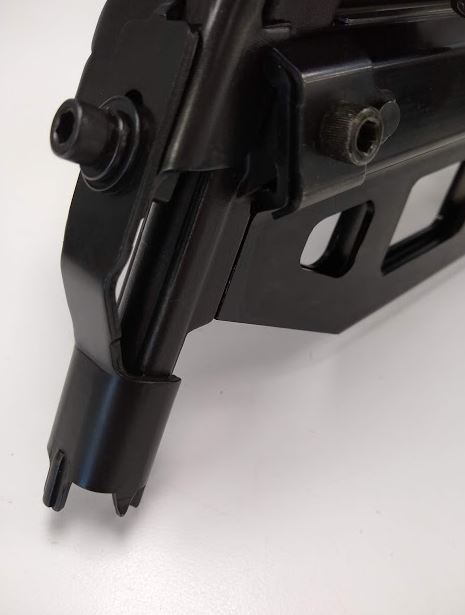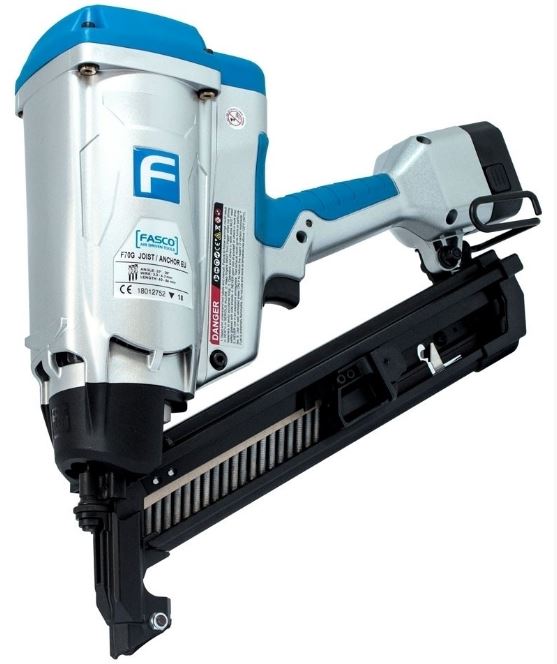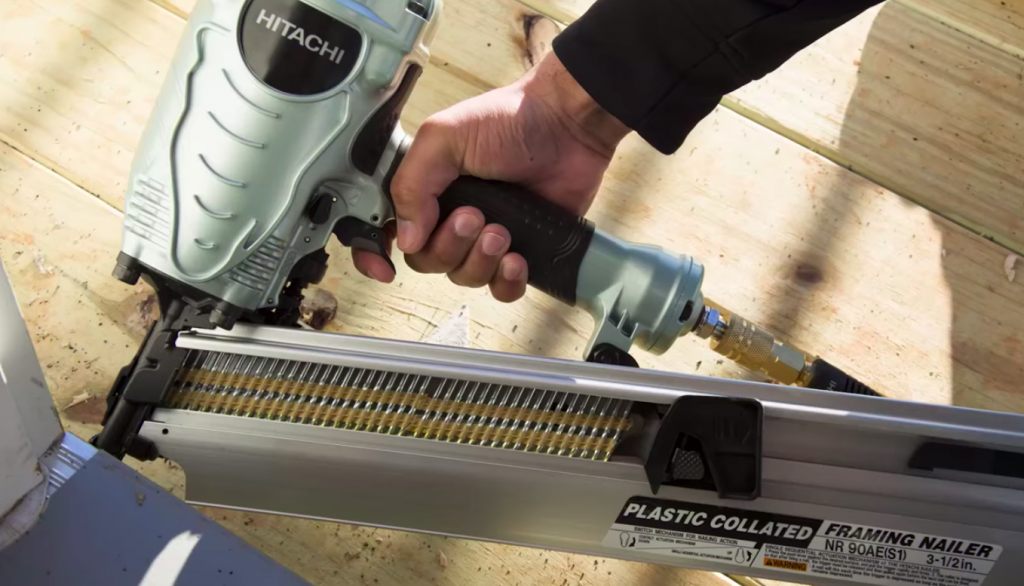The Difference Between Bump and Sequential Firing

For the novice nailer, the difference between bump and sequential firing can spark confusion. But understanding these firing types can prevent purchasing errors—and serious accidents. (For tips on preventing nail gun mishaps, see 10 Tips for Air Tool Safety.) To shed some light on nail gun triggers, read on.
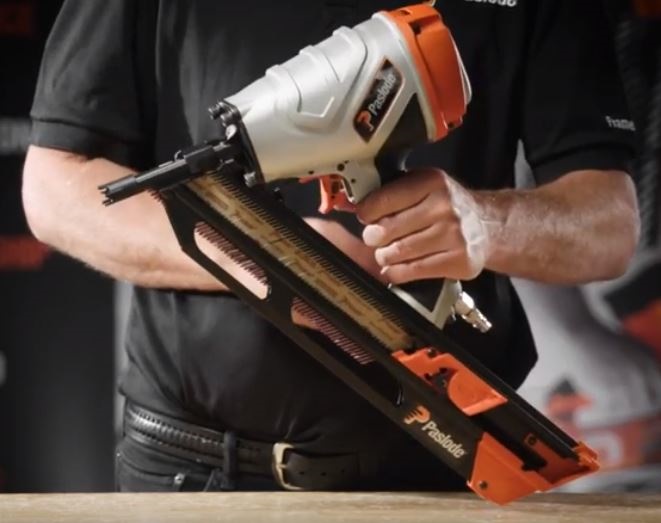
Distinguishing Nail Gun Triggers
Sequential firing and contact (or "bump firing") are determined by how the user operates the controls—the trigger and the safety tip on the nose. The safety tip is also called a "safety contact tip," "touch trip" or "work contact element", depending on the manufacturer. As an example, see the "contact element" on the Paslode F350S PowerMaster Plus, below).
With sequential firing, you have to press or actuate the safety tip, then pull the trigger to fire each nail. In contact firing, nails are released when both the trigger is pulled and the safety tip is pressed against a surface simultaneously. But of course, there's more to it than that.
There are actually four distinct nail gun trigger types recognized by OSHA (Occupational Safety and Health Administration). They are: Full Sequential, Single Sequential, Single Actuation, and Contact Firing*.
Full Sequential Firing
With full-sequential firing, the controls have to be actuated in a series. First, the safety tip has to be pressed, then the trigger has to be pulled to release a single fastener. To drive another nail, you must release the nail gun trigger, lift the tool, press the safety tip and pull the trigger once more. Slower than bump firing, full-sequential firing is considered the safest option.
Also called single-shot firing, full-sequential is ideal for applications such as framing and carpentry, where precision is more important than fastening speed. An example can be seen with the full-sequential firing Fasco F70G Joist Hanger Nailer, below. This particular nail gun is used for fastening metal plate connectors and hurricane ties, both of which have defined nail holes.
Contact or "Bump" Firing
Contact firing is commonly called “bump firing" because the user can quickly press or “bump” the safety tip against a surface to continuously fire nails. The sequence of controls doesn’t matter, so long as both are actuated. You can fire nails very quickly with this type of trigger.
Bump firing is useful in large-scale projects that don't require precise fastener placement. While it's considered a more efficient firing option, as more nails can be fired in a comparatively shorter amount of time, it's also the least safe. Bump firing is ideally used on horizontal, flat surfaces, such as flooring, roofing, decking, and pallet making.
Some nail guns are sold with two triggers, typically with an orange or black trigger for bump firing, and a silver or gray trigger for sequential. More frequently, manufacturers have been offering tool-free "selectable actuation" on nail guns to make them more versatile. With this feature, you just flip a switch to change firing modes, as with the Metabo HPT (formerly Hitachi) NR90AES1M framing nailer, shown below.
Single-Sequential Firing
Single-sequential firing is similar to full sequential in that the user still has to actuate the controls in a series. In this case, though, you don’t have to lift the tool, you can just “drag” the nose along the surface. To fire another nail, you must pull and release the trigger. The upside of this trigger type is slightly greater speed than full-sequential, since you don’t have the added movement of lifting the tool each time.
Single-Actuation Firing
Single-actuation firing is similar to bump firing, but only in shooting the first nail. It doesn’t matter which order the controls are operated initially. To drive the following nail, the user has to lift the tool and squeeze the nail gun trigger once more. According to OSHA, some manufacturers mistakenly label these triggers as “single sequential,” which is technically incorrect.
It’s important to note only experienced nail gun users should select contact or bump firing modes. If you're worried about being considered a "newb" for choosing a sequential firing gun, don't. Even pros like Robert Robillard (the "Concord Carpenter"), recommend sequential fire over bump firing for safety reasons.
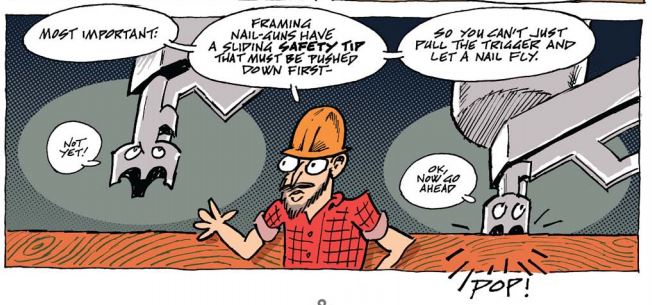
Speaking of Safety
Many nail guns have a recoil, or pushback once the nail is fired. When this happens, a contact firing nailer is more likely to “double fire,” sending two fasteners out of the tool before the trigger is released. The danger, of course, is that the fastener ricochets or shoots elsewhere than the intended surface.
For a light-hearted visual aid, NIOSH (National Institute of Occupational Safety and Health) and the CDC (Centers for Disease Control) created a comic book, Straight Talk About Nail-Gun Safety. Check it out and, in the meantime, happy (and safe) nailing!
*Information provided by OSHA, from “Nail Gun Safety, a Guide for Construction Contractors.”



